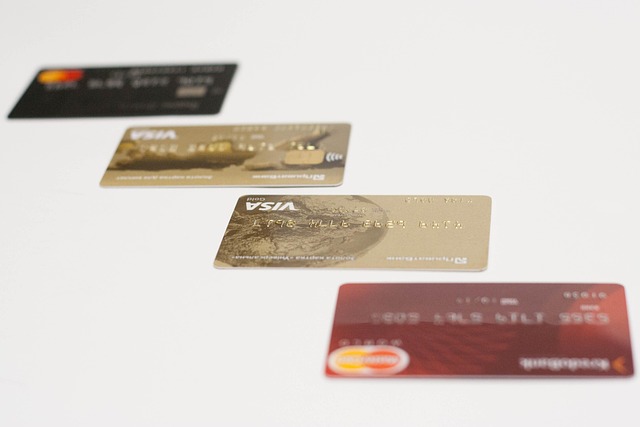Navigating Personal Loans: Options and Considerations
In today's financial landscape, personal loans have become an increasingly popular option for individuals seeking funds for various purposes. Whether you're looking to consolidate debt, finance a major purchase, or cover unexpected expenses, personal loans can provide a flexible solution. This article will explore different types of personal loans, including those accessible with minimal documentation, online options for those with less-than-perfect credit, and alternatives to traditional bank loans.

What are Personal Loans with Just an ID?
Personal loans that require only an ID are designed to simplify the borrowing process, making it more accessible to a wider range of individuals. These loans typically have minimal documentation requirements, often needing just a government-issued identification card to initiate the application process. While this may sound convenient, it’s important to understand the implications of such loans.
These types of loans often come with higher interest rates and fees to compensate for the increased risk taken by the lender. The loan amounts are usually smaller, and repayment terms may be shorter compared to traditional personal loans. Borrowers should carefully consider whether the convenience of minimal documentation outweighs the potential higher costs associated with these loans.
How Do Online Loans to Card with Bad Credit Work?
For individuals with less-than-stellar credit histories, online loans to card options have emerged as a potential solution. These loans are specifically designed for those who may not qualify for traditional bank loans due to poor credit scores. The application process is typically conducted entirely online, with funds deposited directly onto a prepaid debit card or the borrower’s existing bank card.
Online loans to card for those with bad credit often have higher interest rates to offset the increased risk for lenders. However, they can provide a lifeline for individuals who need quick access to funds and have limited alternatives. It’s crucial for borrowers to carefully read the terms and conditions, understanding the total cost of the loan, including any fees and the annual percentage rate (APR).
What Are Non-Bank Loan Options?
Non-bank loans have gained popularity as alternatives to traditional bank financing. These loans are offered by financial institutions that are not classified as banks, such as credit unions, online lenders, peer-to-peer lending platforms, and fintech companies. Non-bank lenders often have more flexible lending criteria and may offer specialized loan products tailored to specific needs or borrower profiles.
One advantage of non-bank loans is that they may be more accessible to individuals who don’t meet the strict requirements of traditional banks. Some non-bank lenders use alternative data points to assess creditworthiness, looking beyond just credit scores to factors like employment history, education, and even social media presence. This can be particularly beneficial for those with limited credit history or past financial difficulties.
How Do Personal Loan Interest Rates Compare?
Interest rates on personal loans can vary widely depending on the lender, loan type, and the borrower’s creditworthiness. Generally, traditional bank loans tend to offer the most competitive rates for borrowers with excellent credit. Non-bank lenders and online platforms may offer rates that are slightly higher but could be more accessible to a broader range of credit profiles.
| Loan Type | Typical APR Range | Best For |
|---|---|---|
| Traditional Bank Loans | 6% - 36% | Borrowers with good to excellent credit |
| Credit Union Loans | 6% - 18% | Members with varied credit profiles |
| Online Personal Loans | 5% - 36% | Quick approval, varied credit scores |
| Secured Personal Loans | 3% - 36% | Lower rates with collateral |
| ID-Only Loans | 15% - 100%+ | Minimal documentation, higher risk |
Prices, rates, or cost estimates mentioned in this article are based on the latest available information but may change over time. Independent research is advised before making financial decisions.
What Should You Consider Before Applying for a Personal Loan?
Before applying for any type of personal loan, it’s essential to carefully evaluate your financial situation and the terms of the loan. Consider the following factors:
-
Purpose of the loan: Ensure that taking out a loan is the best solution for your financial needs.
-
Interest rate and APR: Compare offers from multiple lenders to find the most competitive rates.
-
Loan term: Longer terms may mean lower monthly payments but more interest paid overall.
-
Fees: Look out for origination fees, prepayment penalties, and late payment fees.
-
Total cost of the loan: Calculate the total amount you’ll repay over the life of the loan.
-
Your ability to repay: Make sure the monthly payments fit comfortably within your budget.
By carefully considering these factors, you can make an informed decision about whether a personal loan is right for your situation and which type of loan best suits your needs.
Personal loans can be a valuable financial tool when used responsibly. Whether you’re considering a loan that requires just an ID, exploring online options despite having bad credit, or looking into non-bank alternatives, it’s crucial to understand the terms, costs, and potential risks involved. By doing your research and carefully comparing your options, you can find a personal loan that helps you achieve your financial goals while maintaining your long-term financial health.




